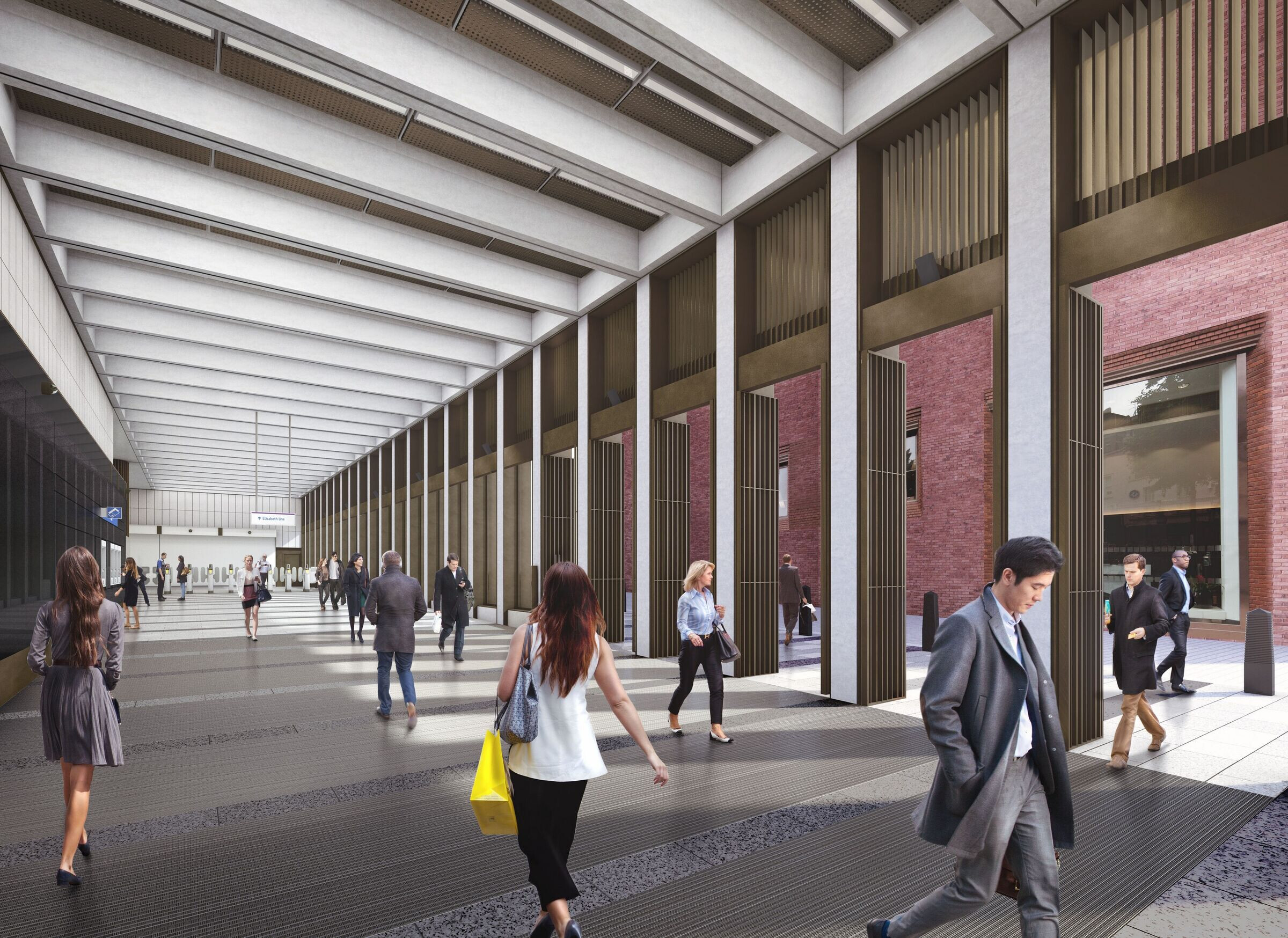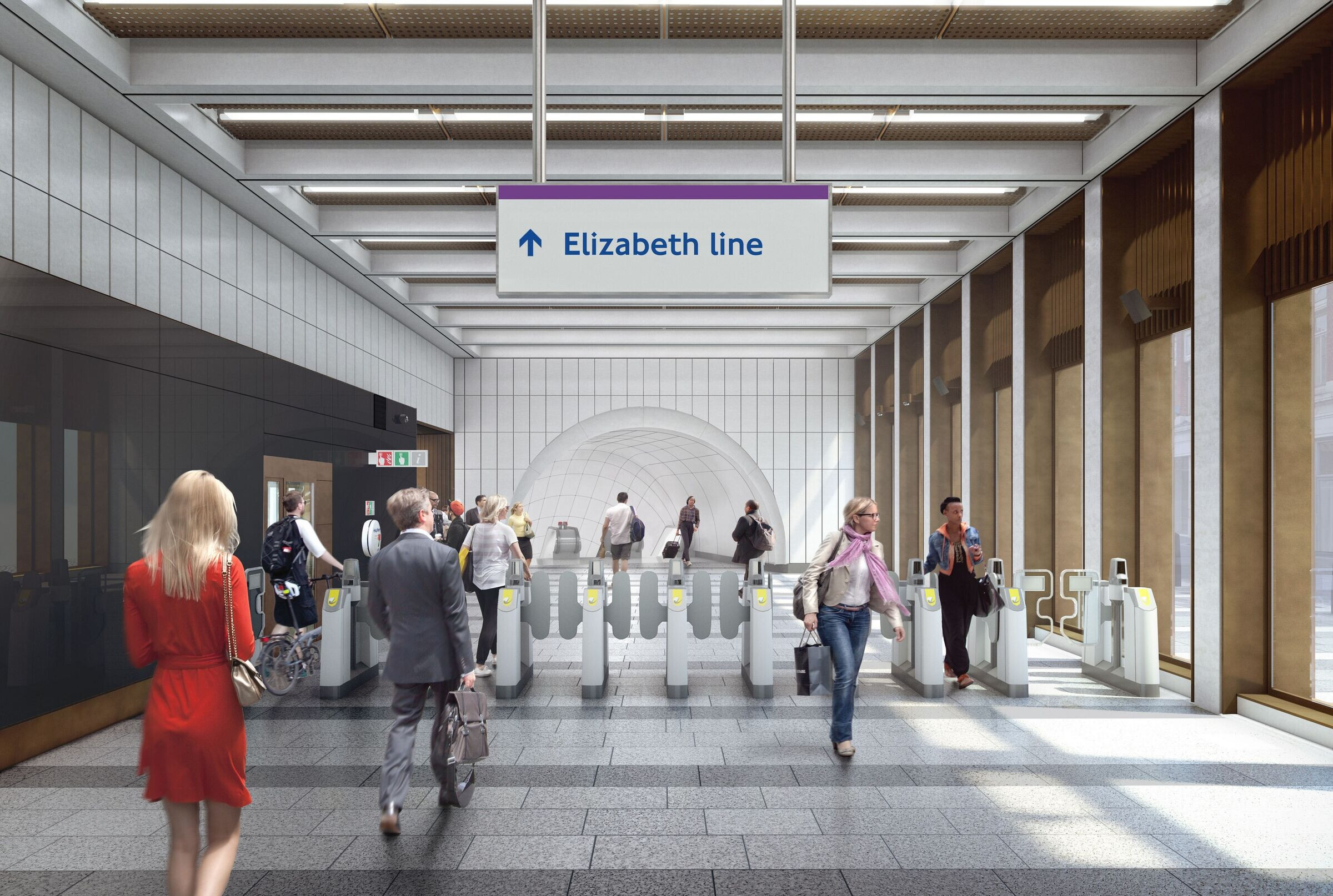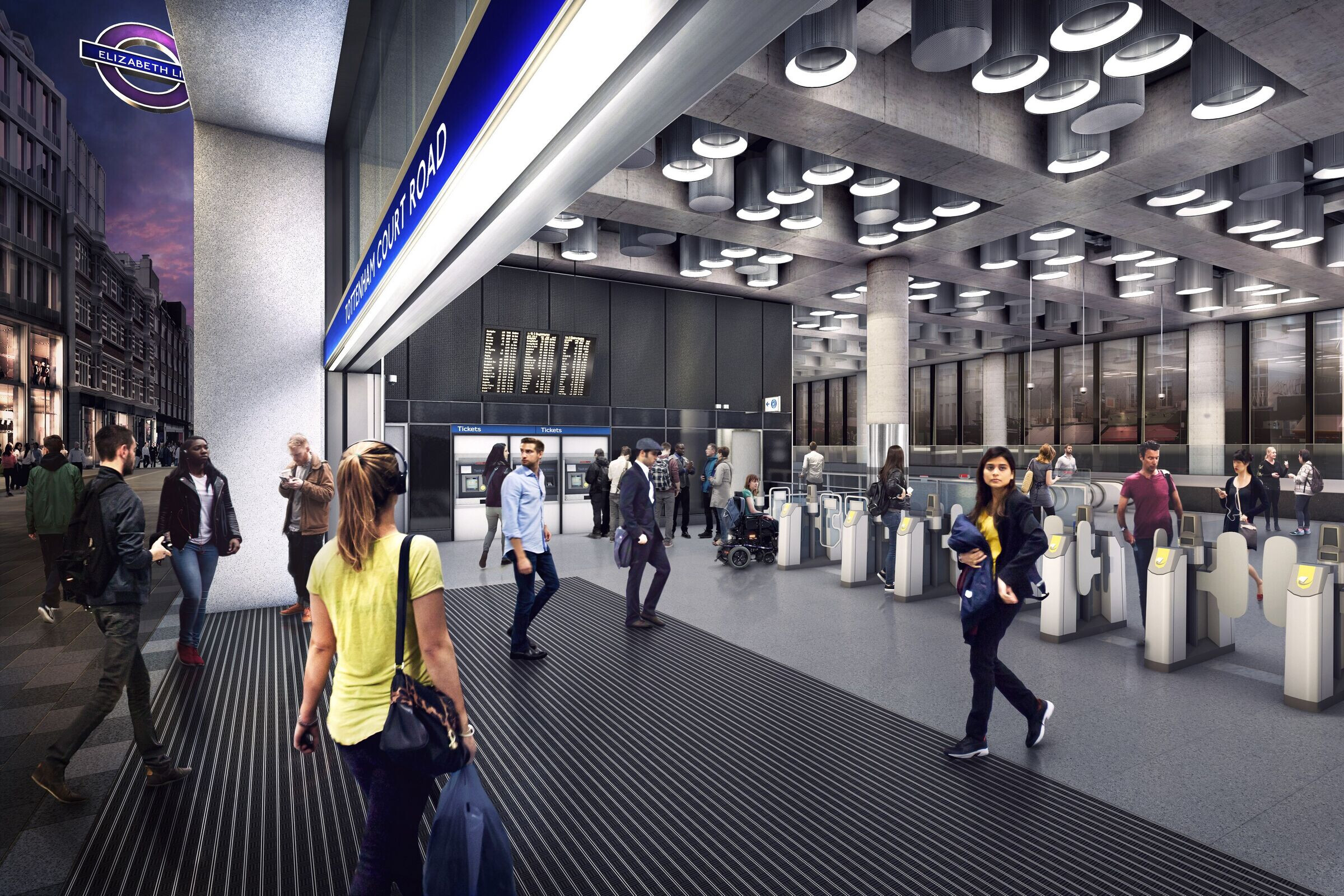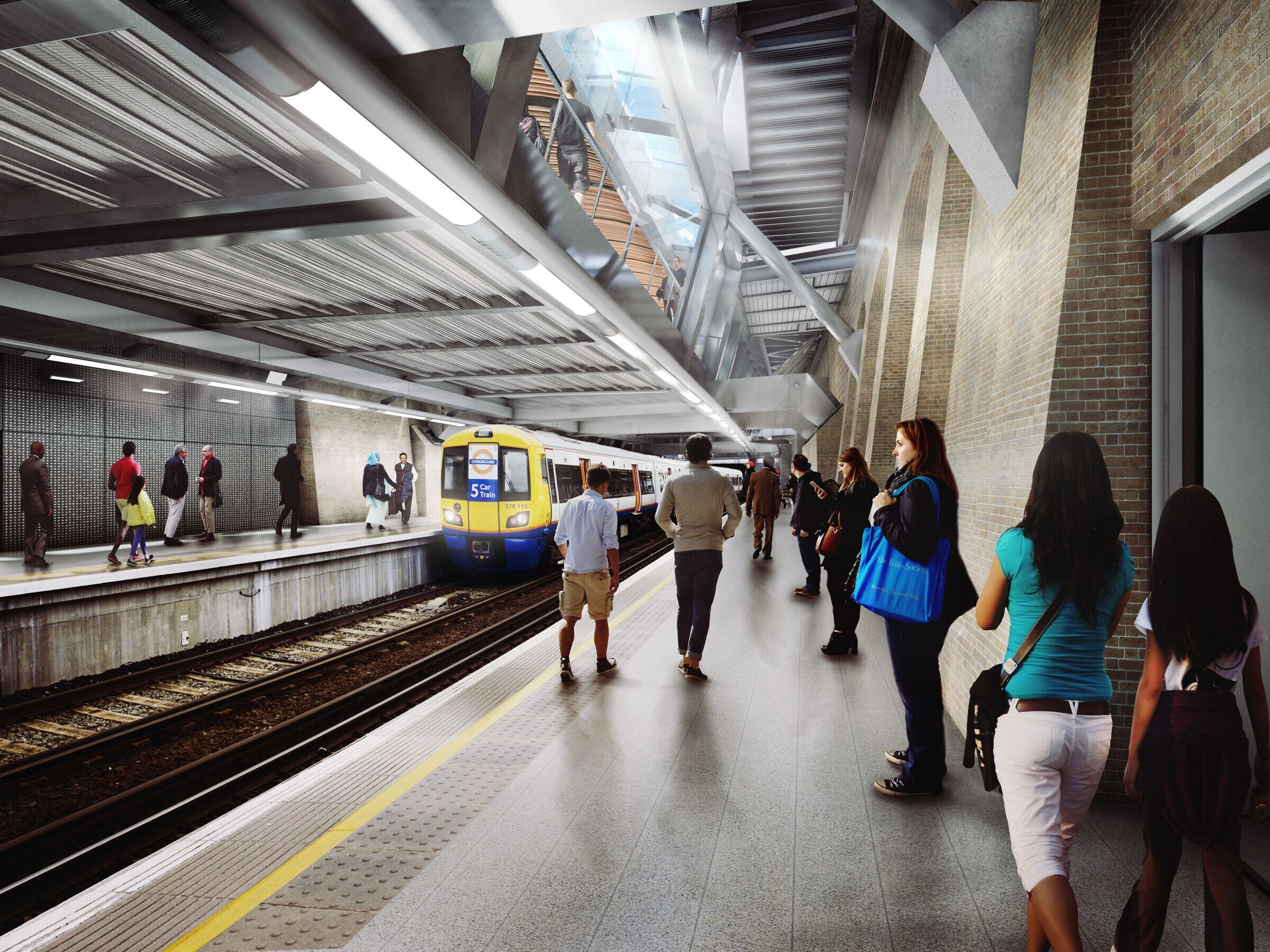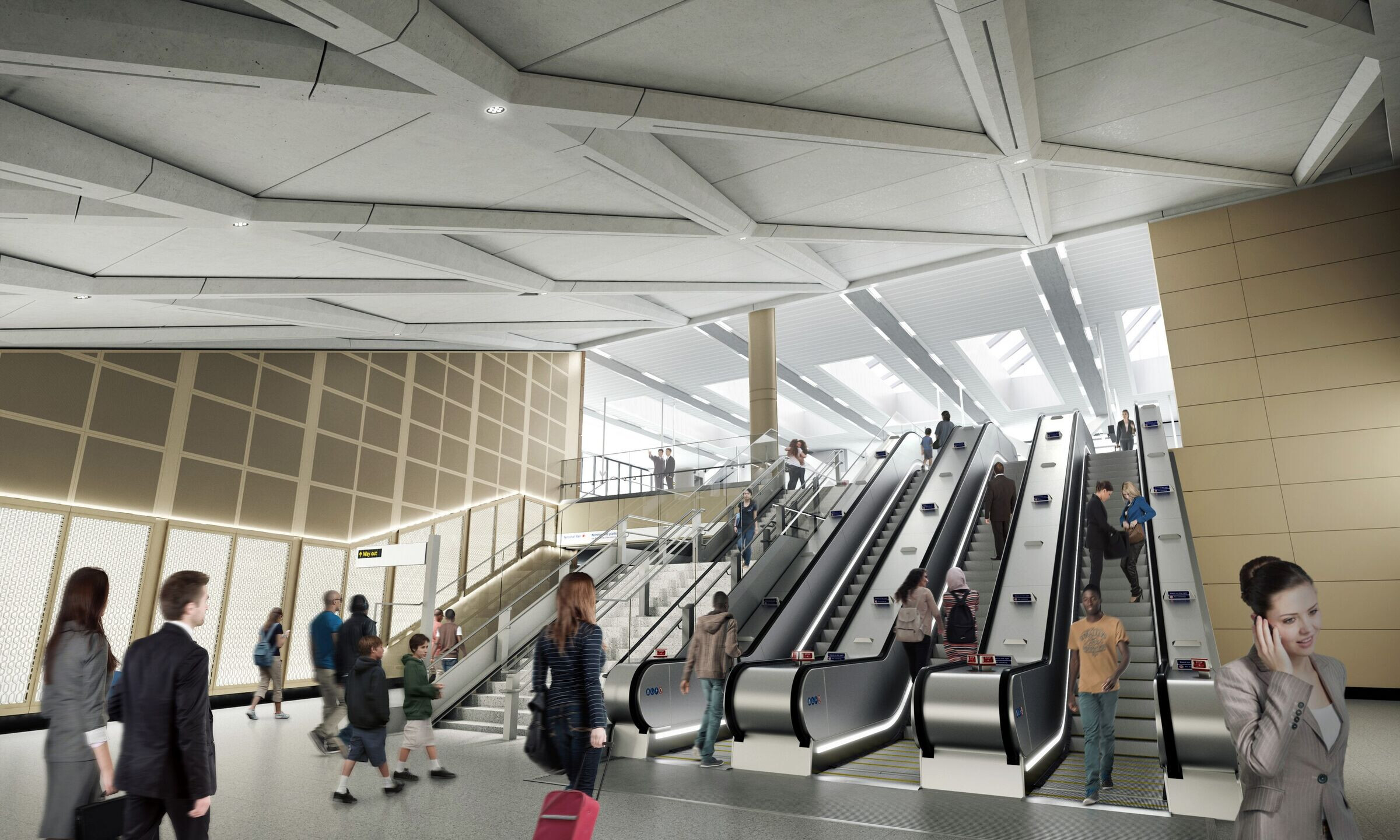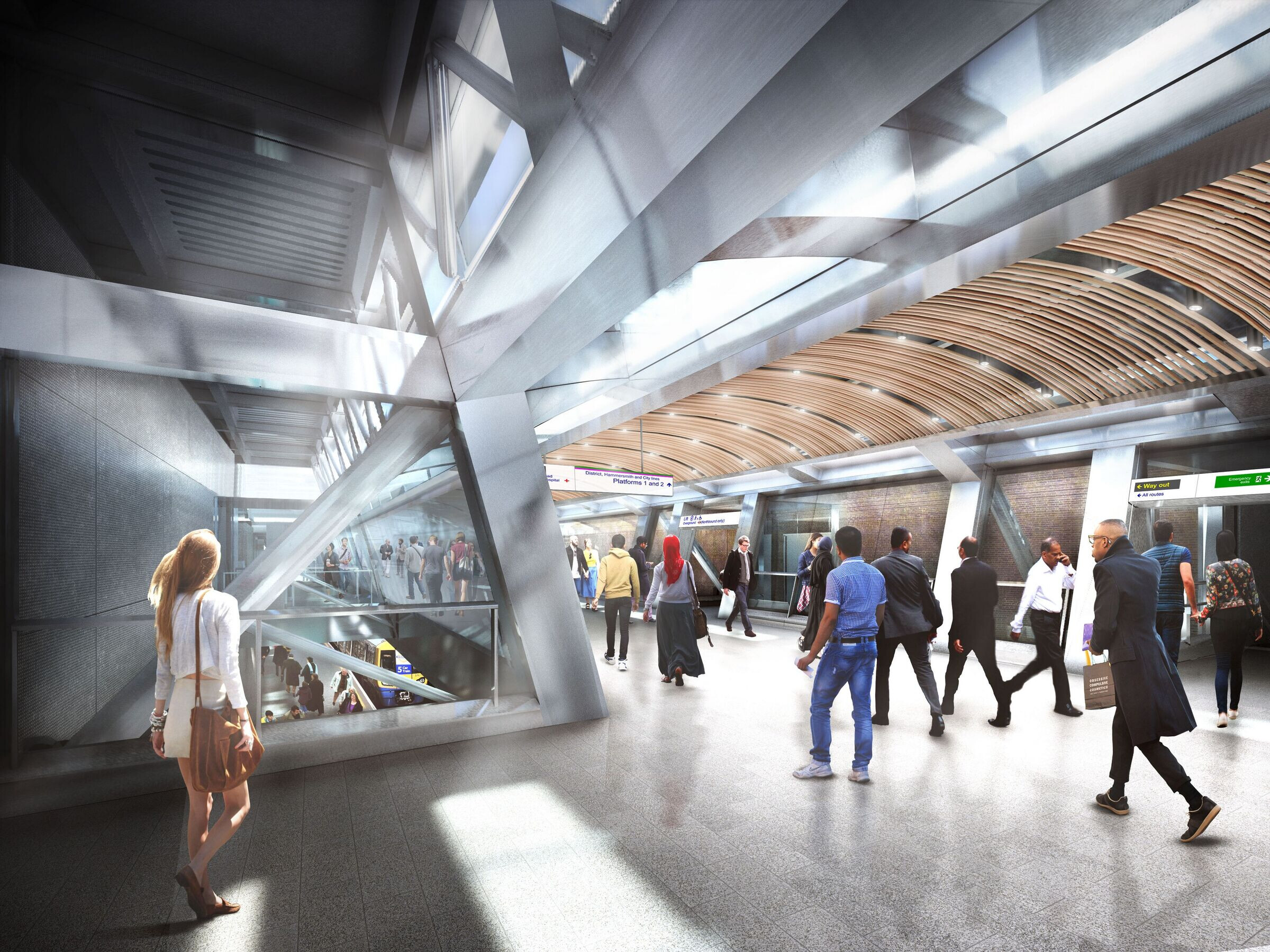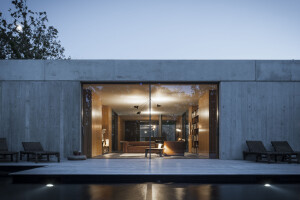The opening of the Elizabeth line is the start of a new chapter in transport history. But how do you create contemporary ticket halls and platforms to complement the original and historic stations of London?
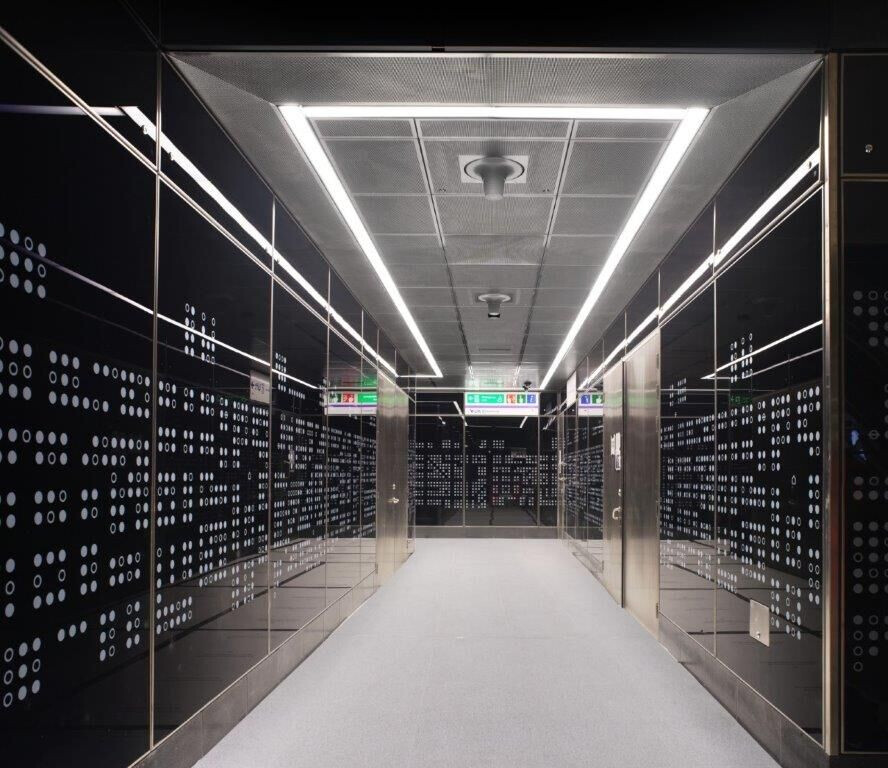
The answer is in metal.
Located many storeys below the renowned cast iron columns and arches of Brunel’s Paddington and the girder canopy in Liverpool Street mainline station by Edward Wilson, Crossrail contractor teams have used SAS International metal products to give shape again to the new stations of the Elizabeth line.
Adjacent to Paddington mainline station built in 1874, the new Elizabeth line Paddington concourses and platform feature architectural bronze acoustic wall panelling, column cladding, and sound absorbing SAS600 rafts installed by SAS International. Also, in the Weston Williamson + Partners designed station, SAS wall-mounted vertical steel fins on Departures Road compliment the heritage cast iron railings on the pavement above.
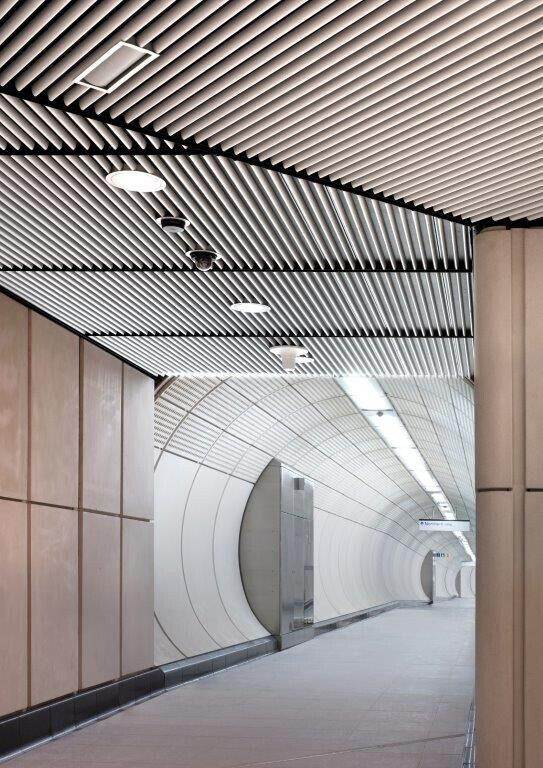
Two stops along the Elizabeth line, we come to Hawkins\Brown’s new vision of Tottenham Court Road. Described by the Crossrail team as “dark and cinematic, reflecting the nocturnal economies that characterise the area”. The use of acoustic stainless-steel and white SAS ceilings provides a raw contrast against the red and black wall glazing in this futuristic aesthetic.
Further along the line, at the Wilkinson Eyre designed Liverpool Street Station, the story takes a new turn. SAS International acoustic metal products adorn the busy Elizabeth line ticket hall providing Class A sound absorption. Using pale grey SAS740 linear profiles and the natural light reflectance of the stainless-steel beam cladding, the colour palette of Liverpool Street is much brighter and calmer than the other stations. A perfect contrast to the 1800s wrought iron used in the original Network Rail platforms located over 30 metres above.
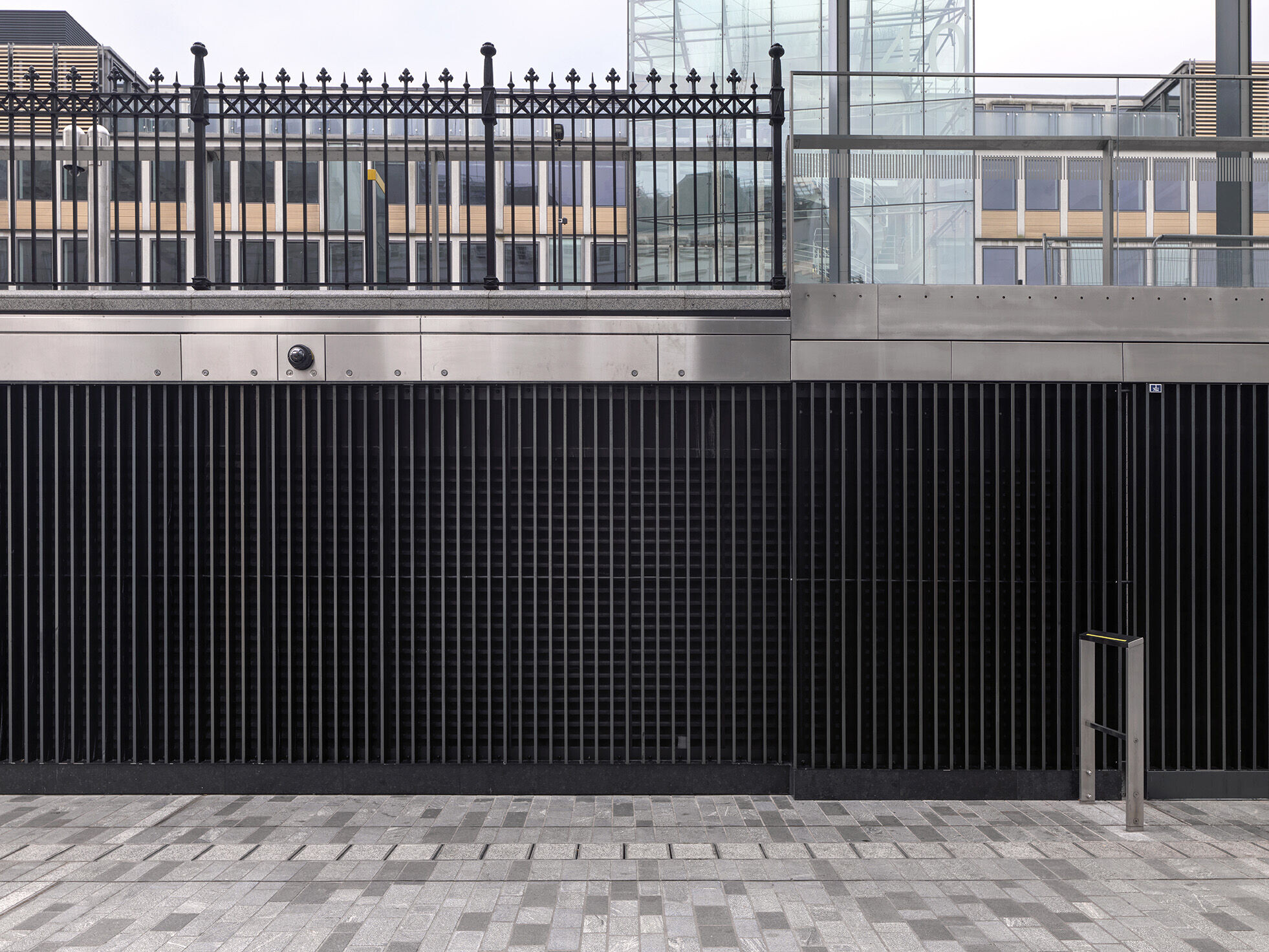
At Whitechapel Elizabeth line station, metal plays an integral role in the growing theme of climate resiliency. With a completely open-air ticket hall, the versatile metal interior is designed to withstand all elements of our changing climate throughout the year. BDP designed an awe-inspiring canopy of aluminium anodised SAS750 tubular ceilings in four bronze shades. A differing take on the bronze theme, this ambitious curved ‘spine’ leads commuters from the Victorian brick arches of the original entrance, up, over, and down, to the Elizabeth line platforms.
From Paddington’s first opening on 29th May 1854 through to today, metal has shaped the form and function of our London railways and stations. SAS are extremely proud to be part of the Crossrail project as well as a contributor to a story spanning nearly 170 years of Great British infrastructure design.








